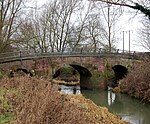Princethorpe College
1966 establishments in EnglandCommons category link is locally definedEducational institutions established in 1966Member schools of the Headmasters' and Headmistresses' ConferencePeople educated at Princethorpe College ... and 6 more
Private schools in WarwickshireRoman Catholic private schools in the Archdiocese of BirminghamSchools in Rugby, WarwickshireUse British English from March 2021Warwickshire building and structure stubsWest Midlands (region) school stubs

Princethorpe College is a Catholic independent day school located in Princethorpe, near Rugby, Warwickshire, England. Princethorpe College opened in September 1966 after the Missionaries of the Sacred Heart (MSCs), purchased the site to use as the senior school for their already established boys’ school, St Bede’s College in Leamington Spa. It occupies a former Benedictine monastery surrounded by 200 acres (0.81 km2) of parkland.
Excerpt from the Wikipedia article Princethorpe College (License: CC BY-SA 3.0, Authors, Images).Princethorpe College
Oxford Road,
Geographical coordinates (GPS) Address Nearby Places Show on map
Geographical coordinates (GPS)
| Latitude | Longitude |
|---|---|
| N 52.3359 ° | E -1.4219 ° |
Address
Princethorpe College
Oxford Road
CV23 9PX
England, United Kingdom
Open on Google Maps








